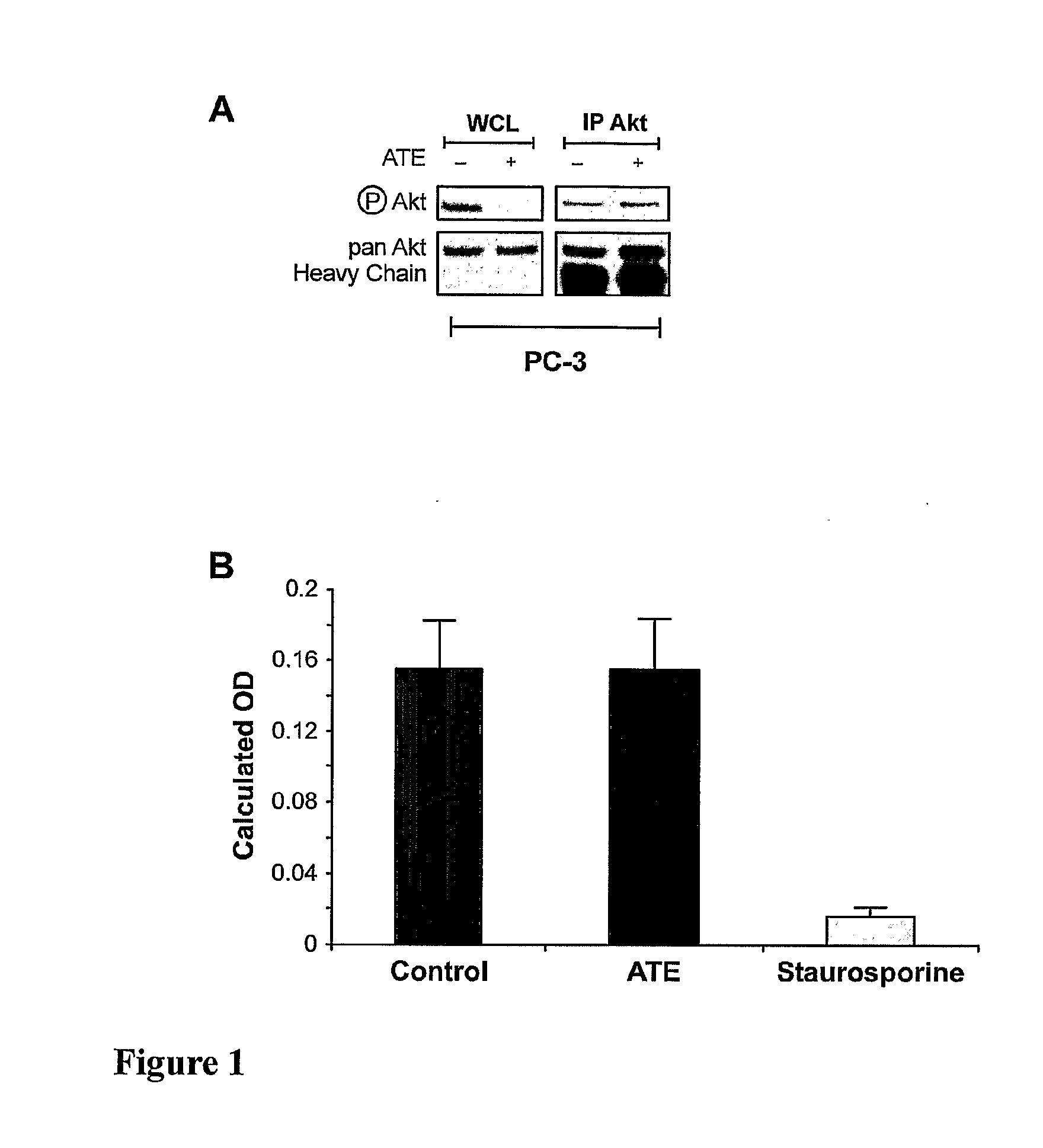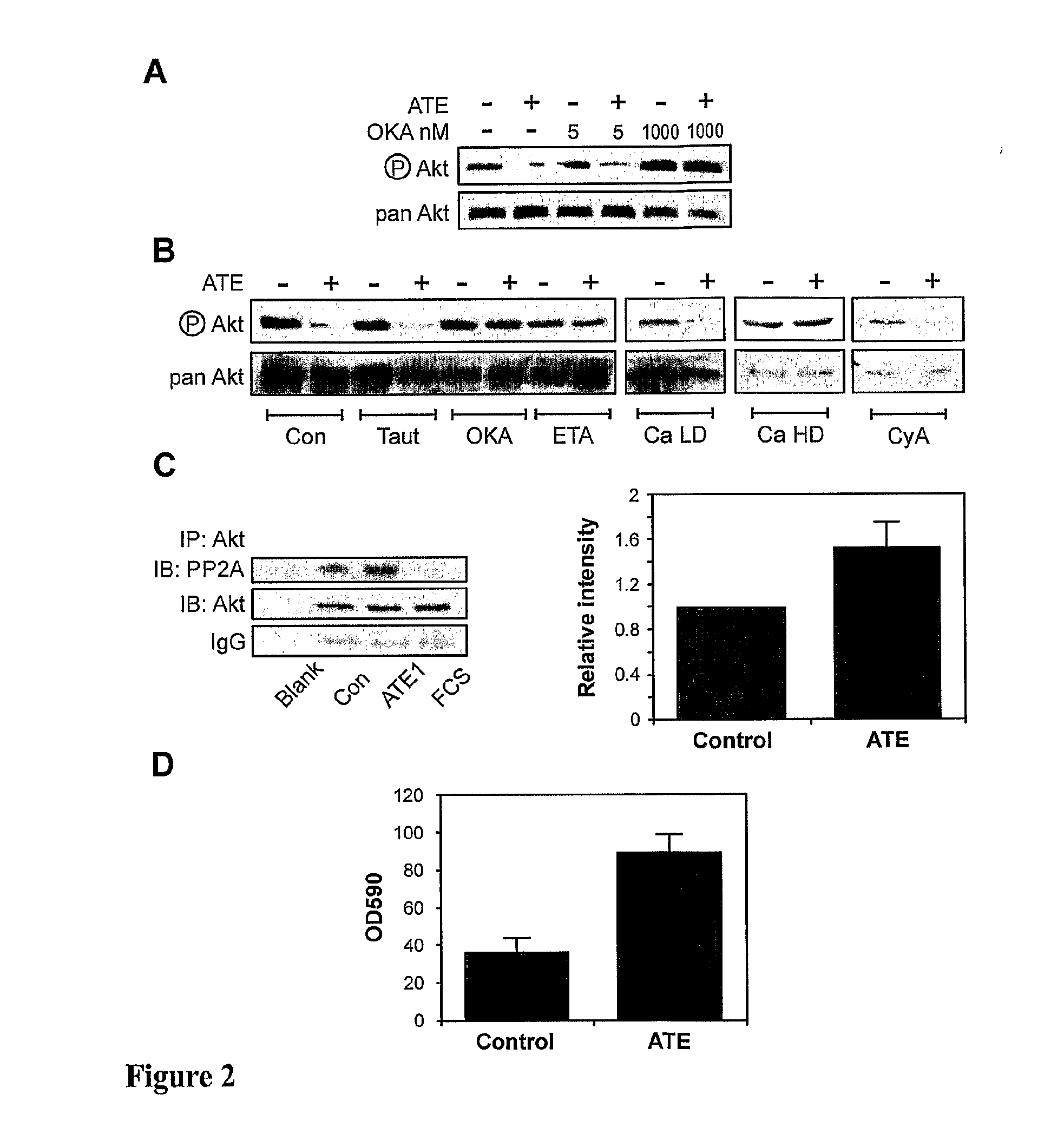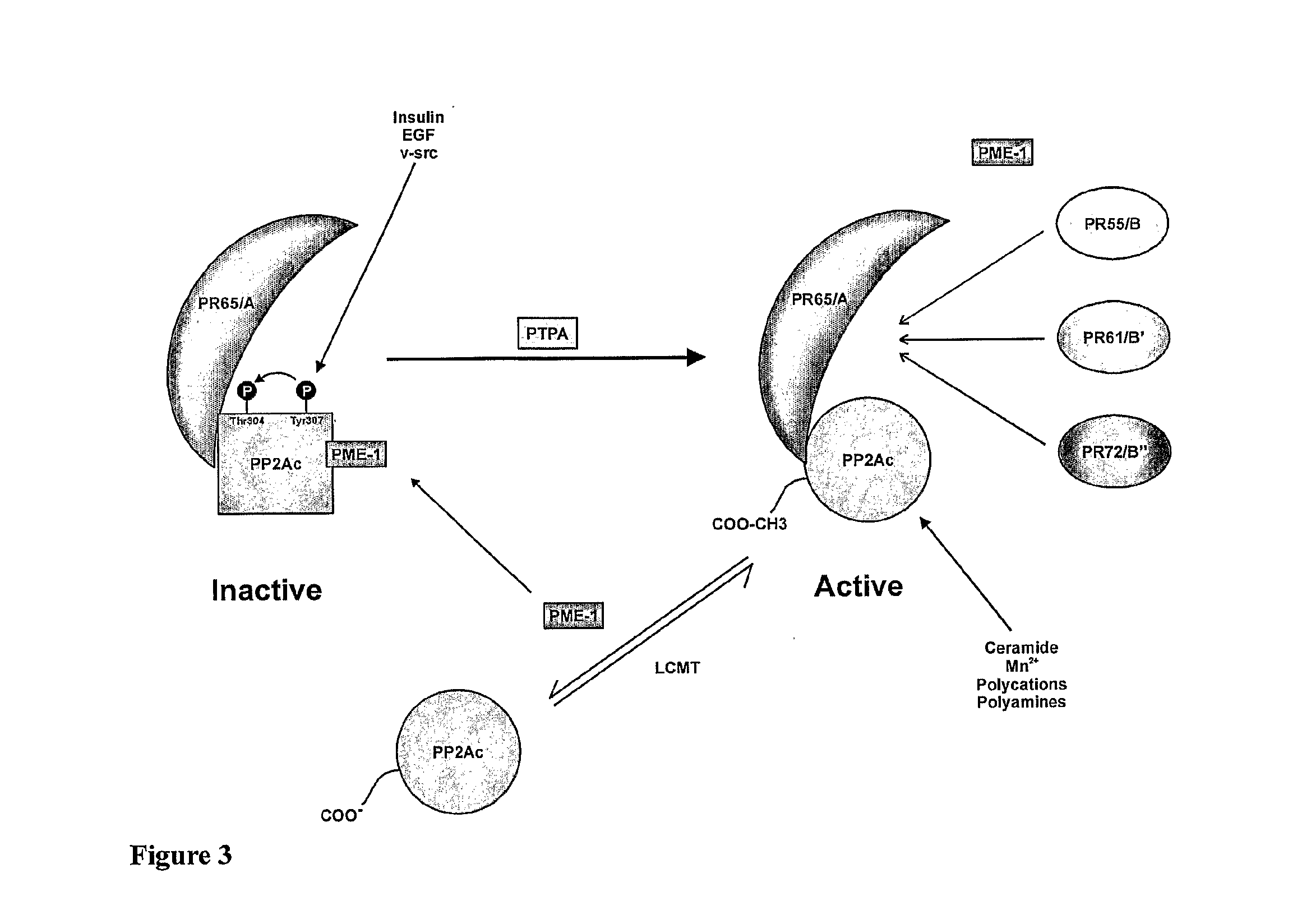Treatment of neurodegenerative diseases
a neurodegenerative disease and treatment technology, applied in the field of selena, can solve the problems of aggravated microtubule instability, disrupted cytoskeletal network and cellular homeostasis, etc., and achieve the effects of reducing or inhibiting the phosphorylation of tau protein, enhancing the activity of pp2a, and reducing the instability of microtubules
- Summary
- Abstract
- Description
- Claims
- Application Information
AI Technical Summary
Benefits of technology
Problems solved by technology
Method used
Image
Examples
example 1
Sodium Selenate Dephosphorylates Akt by an Indirect Mechanism
[0103]Sodium selenate consistently induces the dephosphorylation of Akt in intact prostate carcinoma cells. Such dephosphorylation may be the result of a direct inhibitory effect on the Akt protein itself, or alternatively, can be similarly achieved indirectly by boosting a negative regulator or inhibiting a positive regulator of Akt phosphorylation. To distinguish between a direct and an indirect mechanism, the effect of sodium selenate on Akt phosphorylation and activity in a cell free environment was determined. PC3 prostate carcinoma cells were plated in 100 mm dishes, and when 70-80% confluent serum starved overnight. To determine the effect on Akt phosphorylation in intact cells, PC3 cells were treated with sodium selenate 500 μM in fresh serum free media for 1 hour. Cells were lysed, and the level of Akt Ser473 phosphorylation determined by immunoblot analysis with an activation specific antibody, and comparison mad...
example 2
Sodium Selenate Dephosphorylates Akt by Stimulating the Phosphatase Activity of PP2A
[0106]A reduction in net Akt activity could be achieved indirectly by either preventing the initial Akt phosphorylation, or alternatively, increasing Akt dephosphorylation [Kohn et. al. 1996]. However, given the biphasic response of Akt phosphorylation (an initial transient boost followed by a profound and sustained decrease) induced by sodium selenate, it seemed unlikely that sodium selenate was acting by simply decreasing the ability of an upstream kinase to phosphorylate Akt. The effect of protein phosphatase inhibition on the ability of sodium selenate to induce Akt dephosphorylation was therefore determined. Initially okadaic acid, a polyether toxin from red-tide algae (and causative agent of diarrhoetic shellfish poisoning) which inhibits the phospho-protein phosphatases PP1 and PP2A, two phosphatases implicated in the regulation of Akt dephosphorylation was used [Fernandez et al., 2002]. 5×105...
example 3
Sodium Selenate Directly Boosts the Phosphatase Activity of PP2A Core Dimer
[0111]The core structure of PP2A consists of 36 kDa catalytic subunit (PP2Ac) and a 65 kDa regulatory subunit (PR65 or A subunit). Binding with a third regulatory B subunit regulates substrate specificity [Wera and Hemmings, 1995]. PP2A phosphatase activity can be regulated by post-translational modification, represented schematically in FIG. 3. PP2Ac has been shown to be phosphorylated in vitro by both receptor and non-receptor tyrosine kinases such as EGFR, the insulin receptor, p60v-src and p56lck [Chen et al., 1992]. This phosphorylation occurs specifically at Tyr307, and is associated with a greater than 90% loss in phosphatase activity [Chen et al., 1992]. This phosphorylation is also identified in vivo, and is increased in fibroblasts stimulated with serum or EGF, or transformed with p60v-src, whereas it is decreased by serum starvation [Chen et al., 1994]. Phosphorylation of the adjacent Thr304 has al...
PUM
 Login to View More
Login to View More Abstract
Description
Claims
Application Information
 Login to View More
Login to View More - R&D
- Intellectual Property
- Life Sciences
- Materials
- Tech Scout
- Unparalleled Data Quality
- Higher Quality Content
- 60% Fewer Hallucinations
Browse by: Latest US Patents, China's latest patents, Technical Efficacy Thesaurus, Application Domain, Technology Topic, Popular Technical Reports.
© 2025 PatSnap. All rights reserved.Legal|Privacy policy|Modern Slavery Act Transparency Statement|Sitemap|About US| Contact US: help@patsnap.com



